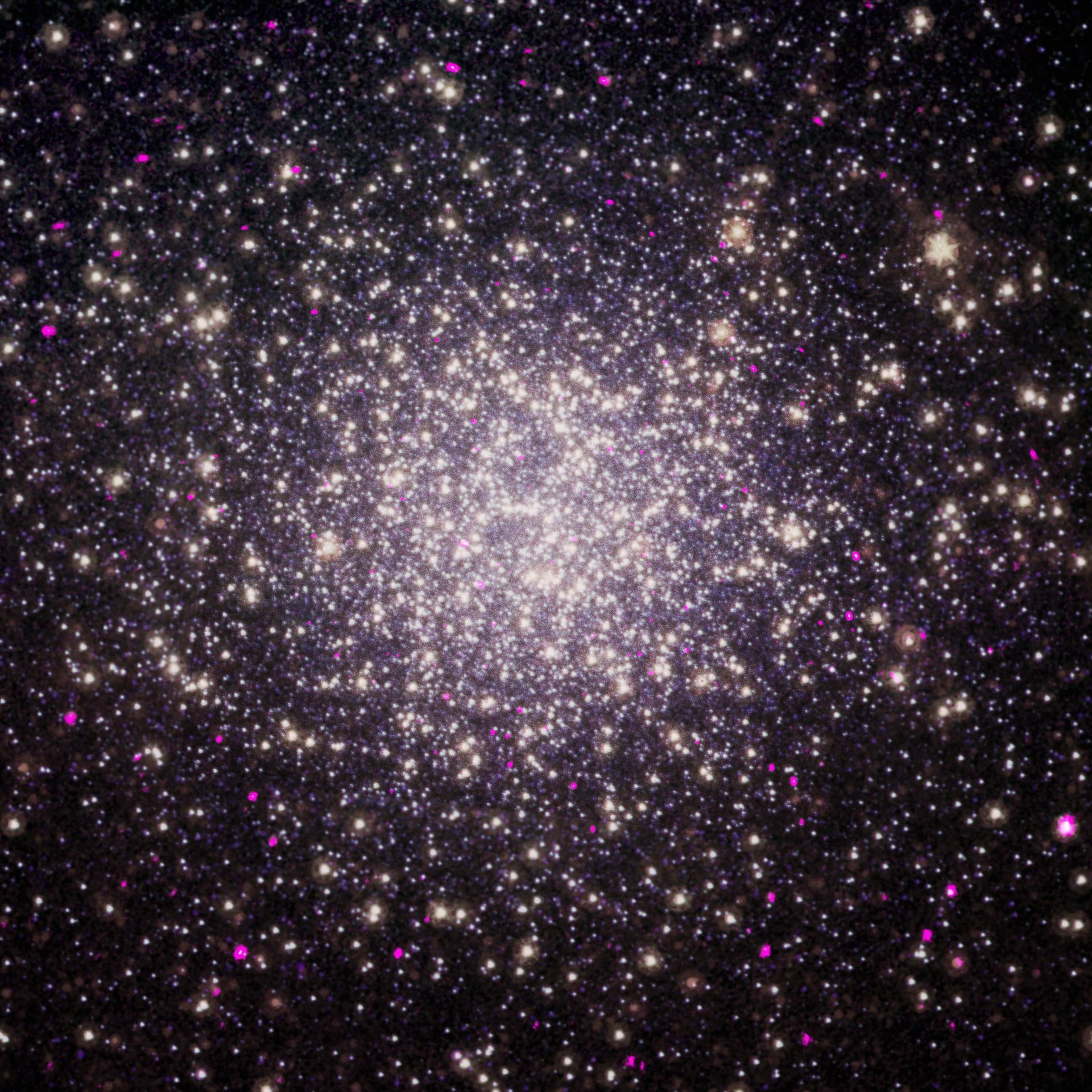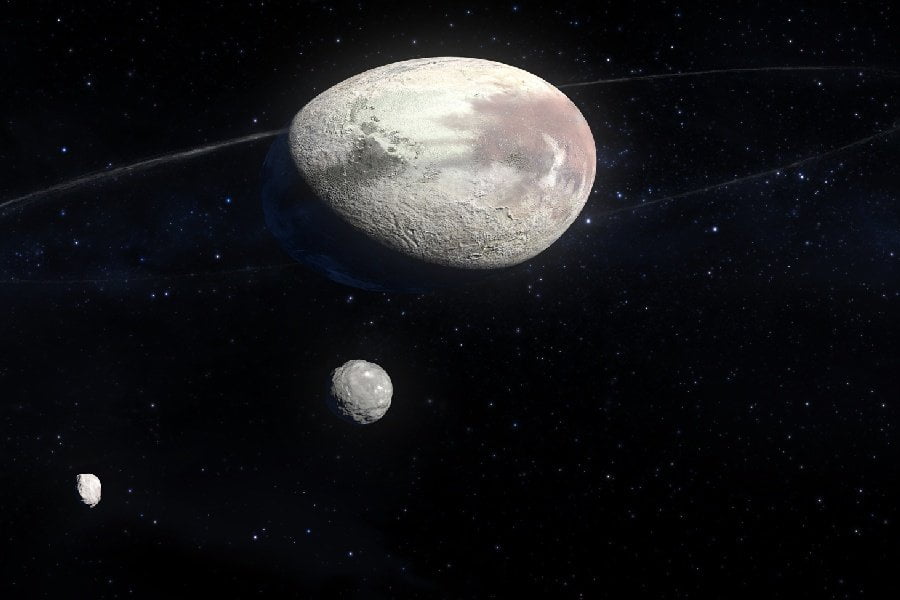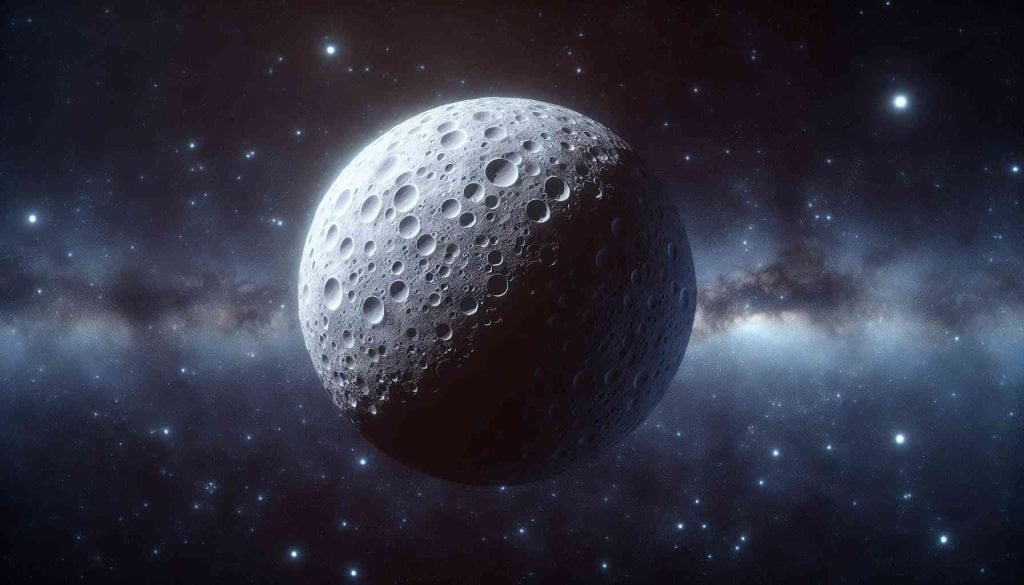Diving into the Mysteries of Dwarf Planet Eris takes us on an incredible journey through the outer reaches of our solar system. Eris, a fascinating celestial body located in the Kuiper Belt, has captivated astronomers and astrophysics enthusiasts alike due to its perplexing characteristics. As we delve into the depths of this enigmatic dwarf planet, we uncover a myriad of scientific wonders that challenge our understanding of the universe. Join us as we unravel the secrets behind Eris and explore its intriguing properties that make it a captivating subject of study.
Key Takeaways:
- Eris is a dwarf planet and a trans-Neptunian object located in the scattered disk, outside the orbit of Neptune. It is the second-largest known dwarf planet in the Solar System.
- Eris was discovered in January 2005 and sparked a debate about the definition of a planet.
- Eris is named after the Greek goddess of strife and discord due to the controversy it caused among astronomers.
- Eris is the second-biggest dwarf planet, located outside the orbit of Neptune and is the most distant dwarf planet.
- Eris is a “scattered disc object” in the Kuiper belt and has a high-eccentricity orbit.
- Limited information is available about the composition and characteristics of Eris’s surface.
- No specific mention is made about whether Eris has any moons.
Dwarf Planet Eris

As an astrophysicist and science writer, I’m excited to dive into the mysteries of Dwarf Planet Eris with you. This enigmatic celestial body has captured the attention of astronomers and sparked debates about the definition of a planet. Let’s explore its fascinating features and unravel its secrets together.
Discovery and Naming
In January 2005, a team led by astronomer Mike Brown made an extraordinary discovery. They found Eris, a dwarf planet located in the scattered disk region beyond the orbit of Neptune. Its existence not only expanded our knowledge of the outer reaches of our solar system but also ignited a debate about what truly constitutes a planet.
Eris is named after the Greek goddess of strife and discord, which perfectly reflects the controversy and disagreements among astronomers surrounding its classification. Its discovery challenged the traditional definition of a planet, prompting a revision that clarified the characteristics necessary for an object to be called a planet.
Size and Orbit
Dwarf Planet Eris is the most massive known dwarf planet in our solar system, second only to Pluto in terms of size. Although slightly smaller than Pluto, Eris boasts more mass. This intriguing world resides in the scattered disk, a region populated by other trans-Neptunian objects.
With its high eccentricity orbit, Eris ventures further from the Sun than Pluto. It is sometimes referred to as the “tenth planet” due to its location in the Kuiper Belt, an icy realm populated by numerous other small bodies.
Comparisons and Significance
To gain a better understanding of Eris, it is helpful to compare it to Pluto. Both dwarf planets reside in the Kuiper Belt and hold similarities in size and composition. However, Eris’s distinctiveness lies in its higher mass, which has significant implications for its formation and evolution.
Studying Eris provides invaluable insights into the outer reaches of our solar system. By comparing its properties to other celestial bodies, astronomers can refine their models and theories about planetary formation and the dynamics of our cosmic neighborhood.
Surface Exploration
While we have yet to fully explore and understand the surface of Eris, scientists continue to gather data and make intriguing observations. Our knowledge about its composition and characteristics remains limited. Exciting future missions and advancements in technology will undoubtedly shed more light on this enigmatic dwarf planet.
Conclusion
Dwarf Planet Eris continues to captivate the scientific community and the curious minds of space enthusiasts. Its discovery shook up our understanding of planets and sparked new discussions about the nature of our solar system. Through ongoing research and exploration, we hope to unlock the mysteries of Eris and deepen our understanding of the vast universe we call home.
Now that we’ve dived into the mysteries of Dwarf Planet Eris, we can appreciate the significance of this celestial body and the enduring debates it has ignited among astronomers. Let us continue to explore the wonders of space and uncover the secrets held by the cosmic entities that surround us.
In a groundbreaking development, the International Nuclear Fusion Plan COP28 is making waves in the field of sustainable energy. Discover more about this revolutionary initiative here.
Witness the awe-inspiring wonders of the universe as the X-ray telescope captures the mesmerizing spider pulsars. Brace yourself for an extraordinary adventure and embark on a journey to the stars by clicking here.
Prepare for the future of space exploration as SpaceX secures its place in the industry by acquiring the renowned pioneer aerospace parachute manufacturer. Find out more about this game-changing partnership here.
Orbital Attributes of Eris
With its unique position in the outer depths of our solar system, dwarf planet Eris presents a fascinating celestial puzzle. Let’s embark on a journey to uncover the orbital attributes of Eris, shedding light on its enigmatic orbit and exploring the mysteries it holds.
The Kuiper Belt and Eris’ Inclined Orbit
Eris resides in the Kuiper Belt, a region beyond the orbit of Neptune that is brimming with icy debris. What sets Eris apart from other celestial bodies is its highly inclined orbit in relation to the plane of the solar system. This means that Eris takes a path that diverges from the typical orbital plane taken by planets like Earth, Mars, and Venus.
As we delve deeper into the mysteries of Eris, we find that its orbit extends far beyond the Kuiper Belt itself. This unusual trajectory distinguishes Eris and highlights its significance in our understanding of the solar system.
A Long Journey Around the Sun
To complete its orbital journey, Eris takes approximately 557 Earth years to make one full revolution around the Sun. This staggering time span emphasizes the vastness and complexity of our universe. The slow composure of Eris’ orbit encourages us to ponder the intricacies of the cosmic ballet happening around us.
As Eris circumnavigates the Sun, it also rotates on its axis, completing one rotation every 25.9 hours. To put this into perspective, it’s comparable to the length of a day here on Earth. Visualizing Eris slowly revolving and rotating through the vastness of space adds a mesmerizing quality to our understanding of this enigmatic dwarf planet.
An Unveiling of Moons and Magnetosphere
Currently, no moons have been discovered orbiting Eris. However, ongoing explorations and future observations offer the potential for tantalizing discoveries in the realm of Eris’ satellite companions.
When it comes to Eris’ magnetosphere, we find ourselves in a realm of limited knowledge. The dwarf planet’s distance from the Sun plays a role in the behavior of its atmosphere, causing it to collapse and freeze at times while thawing when it reaches its closest proximity to our star. As of now, detailed information about Eris’ magnetosphere remains elusive. Yet, the lure of unveiling its magnetic secrets drives us to venture further into the mysteries of Eris.
Key Takeaways:

- Eris’ orbital attributes challenge our understanding of the solar system, residing in the highly inclined Kuiper Belt and extending far beyond it.
- It takes approximately 557 Earth years for Eris to complete one orbit around the Sun, while rotating on its axis every 25.9 hours.
- No moons have been discovered orbiting Eris to date, but future explorations may yet reveal potential companions.
- Limited information is available regarding Eris’ magnetosphere, inspiring continued investigations into this intriguing celestial body.
Note: For further information, please refer to the following sources:
- NASA Science: Eris – NASA Science
- NASA Solar System Exploration: Eris in-depth – NASA Solar System Exploration
Comparison to Other Dwarf Planets
Eris, a fascinating dwarf planet that resides in the outer regions of our solar system, offers a wealth of intrigue and discovery. Its unique characteristics and enigmatic nature have led scientists to compare it to other dwarf planets, shedding light on the mysteries of our celestial neighborhood.
Size and Surface
Eris, with a diameter of approximately 1,445 miles (2,326 kilometers), is the second-largest known dwarf planet in our solar system, falling just behind Pluto (NASA Science). When comparing Eris to other dwarf planets, its size is comparable to that of Pluto, making them almost the same in size. However, Eris boasts a higher mass than Pluto, influencing its formation and evolution (NASA Science). Yet, when it comes to the surface of Eris, scientists have yet to uncover the finer details. Further exploration is needed to gain a comprehensive understanding of its composition and physical features.
Orbit and Rotation
Eris possesses an orbit that sets it apart from its fellow dwarf planets. Residing in the Kuiper Belt, a zone of icy debris beyond Neptune’s orbit, its unique orbital path distinguishes it from other members of the solar system. While Pluto predominantly maintains its orbit closer to the Sun, Eris takes a more elongated journey, venturing even further than Pluto at times (NASA Science). Additionally, Eris takes approximately 557 Earth years to complete one orbit around the Sun, highlighting its distinct and elongated trajectory. During this long journey, Eris rotates on its axis, completing one rotation every 25.9 hours, akin to Earth’s day length (NASA Science).
Composition and Comparison
When examining the composition of Eris, studies reveal some resemblances to Pluto. However, Eris’s unexpected physical properties set it apart from its celestial cousin. Caltech astronomer Mike Brown, a key figure in Eris’s discovery, conducted a study revealing that while Eris and Pluto are “almost twin” in many aspects, they exhibit different physical properties (NASA Science). These findings further highlight the intricacies and complexities of the dwarf planets in our ever-expanding knowledge of the solar system.
In the realm of comparison, Eris’s discovery triggered a significant reclassification of celestial bodies. Its identification as a dwarf planet, along with Pluto, reshaped our understanding and prompted a more specific definition of what constitutes a “planet” (Wikipedia). This monumental change in classification emphasizes the unique position that Eris holds within the solar system and the ongoing exploration and research it inspires.
Key Takeaways:
- Eris, the second-largest known dwarf planet in our solar system, shares similarities in size with Pluto, but boasts a higher mass, influencing its formation and evolution.
- Eris’s orbit extends further from the Sun than Pluto, earning it a distinct position in the Kuiper Belt and highlighting its unique trajectory.
- The composition of Eris exhibits resemblances to Pluto, but noteworthy differences in physical properties contribute to the ongoing intrigue surrounding this enigmatic celestial body.
- Eris’s discovery prompted a significant reclassification of celestial bodies and spurred a reevaluation of what defines a “planet,” reshaping our understanding of the outer reaches of the solar system.
Sources:
Significance of Eris in the Solar System
Eris, a dwarf planet located in the far reaches of our solar system, holds great significance in unraveling the mysteries of our cosmic neighborhood. Let’s dive into the key aspects of Eris and explore why it’s a celestial body worthy of our attention.
Eris: A Unique Dwarf Planet
Eris, discovered in January 2005, is almost the same size as Pluto, one of the most well-known dwarf planets in our solar system. Its discovery challenged the definition of a planet and sparked a heated debate among astronomers (Universe Today). This controversy led to the creation of a new classification, “dwarf planets,” that reshaped our understanding of celestial bodies.
Exploring Eris’s Size and Surface
With a diameter of approximately 1,445 miles (2,326 kilometers), Eris ranks as the second-largest known dwarf planet in our solar system (NASA Science). While Eris’s surface remains a mystery, scientists speculate that it consists of a mix of rocky and icy materials, similar to other dwarf planets found in the Kuiper Belt (NASA Science).
Orbit and Rotation: Beyond the Kuiper Belt
Eris’s orbit adds to its significance. It resides in the Kuiper Belt, a zone of icy debris beyond the orbit of Neptune. Unlike the planets in our solar system, Eris’s orbit is highly inclined and extends far beyond the Kuiper Belt, presenting a unique trajectory (NASA Science). It takes approximately 557 Earth years for Eris to complete one orbit around the Sun, and it rotates on its axis every 25.9 hours, comparable to a day on Earth (NASA Science).
Dysnomia: Eris’s Mysterious Moon
Eris has a companion in its cosmic journey – Dysnomia. Named after the daughter of Eris in Greek mythology (Universe Today), Dysnomia was discovered a few months after Eris itself, on September 10th, 2005 (Universe Today). As of now, limited information is available about Dysnomia, but future observations might unveil more about this enigmatic moon.
Key Takeaways:
- Eris’s discovery reshaped our understanding of dwarf planets and led to a reevaluation of the definition of a planet.
- Its diameter of approximately 1,445 miles (2,326 kilometers) makes Eris the second-largest known dwarf planet in our solar system.
- Eris’s orbit extends far beyond the Kuiper Belt, adding to its uniqueness and scientific significance.
- Dysnomia, Eris’s moon, captivates scientists, and further exploration may reveal its mysteries.
Sources:
– Universe Today
– NASA Science
FAQ
Q1: What is Eris?
A1: Eris is a dwarf planet located in the scattered disk, outside the orbit of Neptune. It is the second-largest known dwarf planet in the Solar System and was discovered in January 2005.
Q2: How does Eris compare to Pluto?
A2: Eris is almost the same size as Pluto but has more mass. Its discovery, along with Pluto, led to a reevaluation of the definition of a planet and the creation of the “dwarf planet” category.
Q3: What is known about the surface of Eris?
A3: Limited information is available about the surface of Eris. It is believed to contain a mixture of rocky and icy materials, similar to other dwarf planets in the Kuiper Belt.
Q4: Does Eris have any moons?
A4: As of now, no moons have been discovered orbiting Eris. However, future observations and explorations may reveal the presence of any potential moons.
Q5: What is the orbit of Eris like?
A5: Eris resides in the Kuiper Belt and has a highly inclined and eccentric orbit. Its orbit extends far beyond the Kuiper Belt, distinguishing it from the other planets in our solar system. Eris takes approximately 557 Earth years to complete one orbit around the Sun.
- Unveiling the Enigma: Mansoureh Khojasteh Bagherzadeh’s Public Appearances & Private Life in Iran - July 18, 2025
- Unveiling the Mystery: Mansoureh Khojasteh Bagherzadeh’s Husband: A Rare Glimpse into a Private Life - July 18, 2025
- Unveiling Masoud Khamenei’s Mother: Power, Influence, and Iran’s Future - July 18, 2025
















